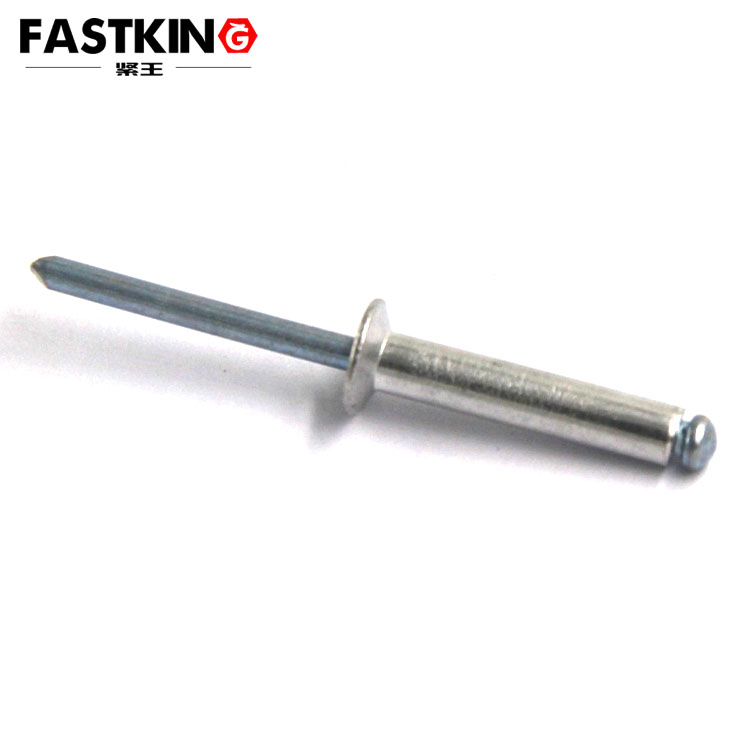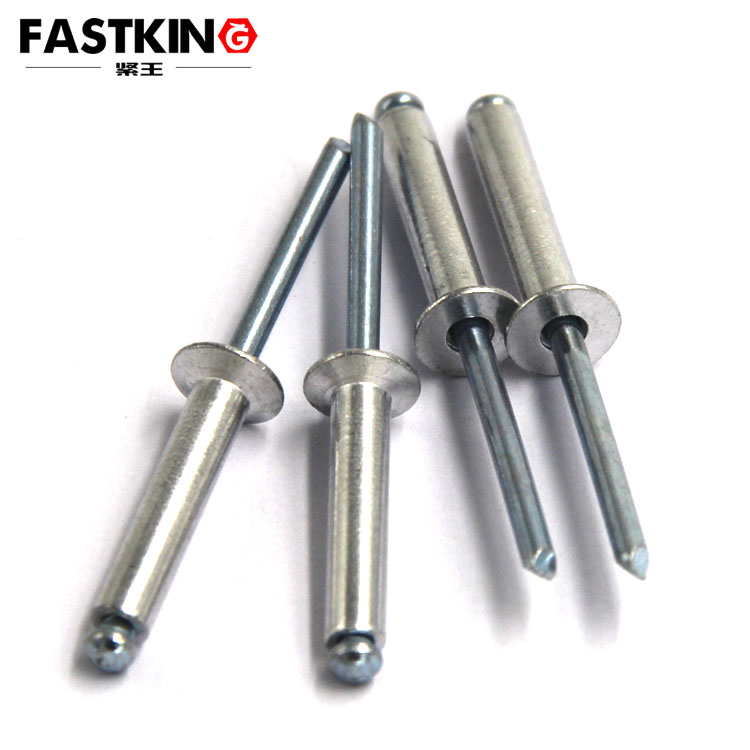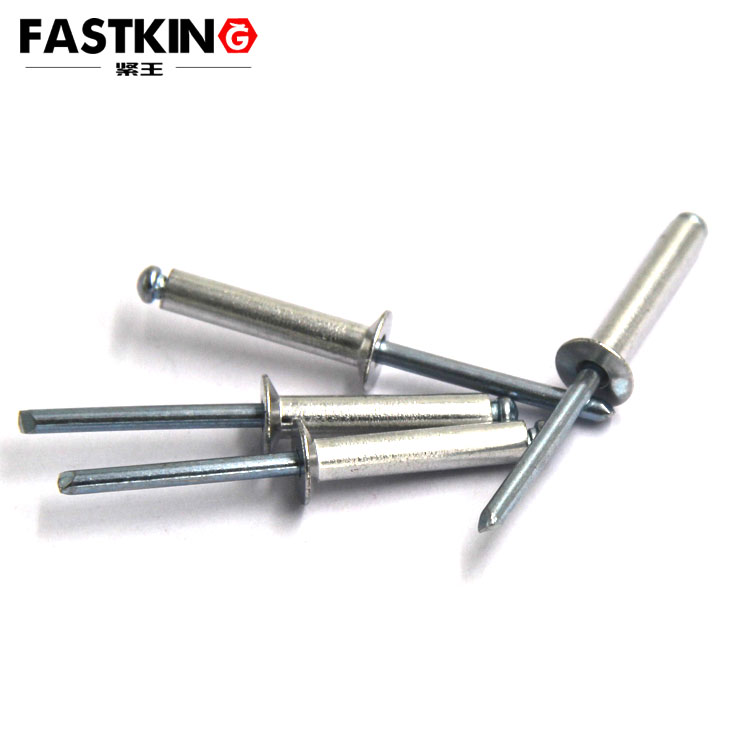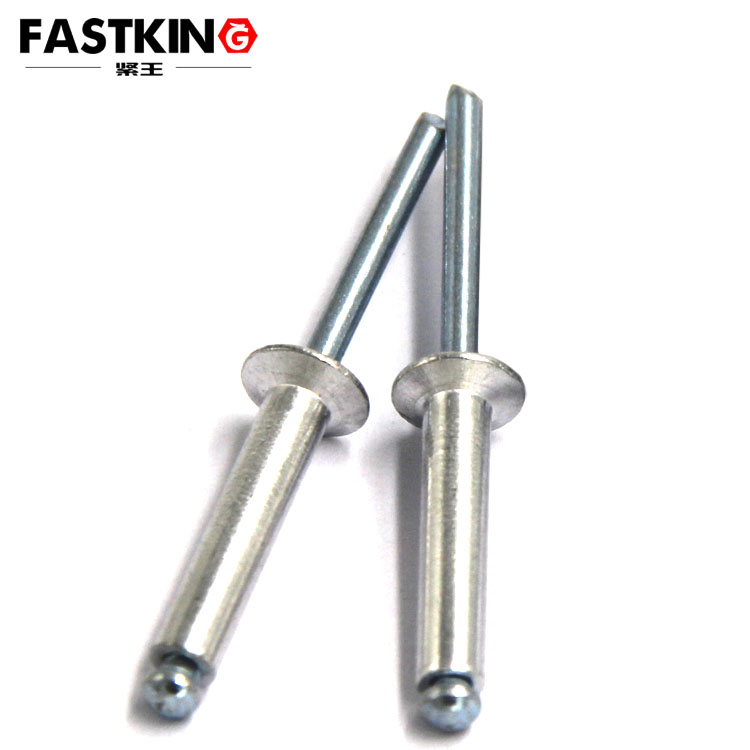Open-end countersunk blind rivets are widely used fasteners in industrial manufacturing and daily maintenance. Their unique structural design makes them excel in applications requiring high-strength connections and smooth surface finishes. This article will detail the usage scenarios and methods of open-end countersunk blind rivets to help readers better understand and apply this important fastener.
Structure and Characteristics of Open-End Countersunk Blind Rivets

Open-end countersunk blind rivets consist of two parts: the rivet body and the mandrel. The rivet body typically features a countersunk design, which allows it to sit flush with the workpiece surface, providing a smooth appearance. The mandrel is used to provide pulling force during installation, causing the rivet body to expand and secure itself to the workpiece.
Key Features:
1. High Strength: Suitable for applications requiring significant tensile and shear strength.
2. Smooth Surface: The countersunk design ensures a flush surface after installation, ideal for applications with high aesthetic requirements.
3. Easy Installation: Specialized tools enable quick installation, improving work efficiency.
4. Wide Applicability: Can be used to join various materials, including metal and plastic.
Usage Scenarios
Open-end countersunk blind rivets are widely used in the following fields:

1. Aerospace
In the aerospace industry, fasteners must meet extremely high strength and weight requirements. Open-end countersunk blind rivets are widely used in critical areas such as aircraft fuselages and wings due to their high strength and lightweight properties.
2. Automotive Manufacturing
In automotive manufacturing, high-strength fasteners are required for car bodies and chassis. Open-end countersunk blind rivets provide reliable connections while maintaining a smooth surface, enhancing both the aesthetics and safety of vehicles.
3. Electronic Devices
In the manufacturing of electronic devices, especially precision-assembled products like laptops and smartphones, open-end countersunk blind rivets offer stable connections without compromising the device's appearance or internal space.
4. Construction Industry
In the construction industry, open-end countersunk blind rivets are commonly used for connecting metal curtain walls and roof structures. Their high strength and weather resistance make them ideal for outdoor environments.
5. Daily Maintenance
In daily maintenance, open-end countersunk blind rivets are often used for repairing furniture, appliances, and other items, providing quick and secure connections.

Usage Methods
Proper use of open-end countersunk blind rivets is crucial to ensuring connection quality. Below are the detailed steps:
1. Preparation
Select the Appropriate Rivet: Choose the correct rivet specifications based on the material and thickness of the workpiece.
Prepare Tools: Ensure you have a specialized blind rivet gun or other installation tools.
Clean the Workpiece Surface: Ensure the connection area is clean, free of oil, and debris.
2. Drilling
Determine the Hole Size: Select the appropriate drill bit based on the rivet diameter. The hole diameter should be slightly larger than the rivet diameter.
Drill the Hole: Drill a hole at the desired connection point, ensuring the hole wall is smooth and free of burrs.
3. Installing the Rivet
Insert the Rivet: Insert the rivet into the hole, ensuring the rivet head is flush with the workpiece surface.
Use the Rivet Gun: Align the rivet gun's head with the mandrel and pull the trigger to draw out the mandrel, causing the rivet body to expand and secure itself to the workpiece.
Check Installation Quality: Ensure the rivet is firmly installed without any looseness.
4. Completion and Cleanup
Cut the Mandrel: Use the rivet gun's cutting function to trim the excess mandrel.
Clean the Workspace: Remove debris and waste generated during installation to maintain a clean work environment.
Precautions

1. Choose the Correct Rivet Specifications: Different rivet specifications are suitable for different materials and thicknesses. Incorrect selection may result in weak connections.
2. Ensure Drilling Quality: The hole diameter and depth must be accurate. Avoid holes that are too large or too small, as they may affect the rivet's fixing performance.
3. Use Specialized Tools: Specialized rivet guns provide stable pulling force and precise cutting, ensuring installation quality.
4. Regular Inspections: For critical applications, regularly inspect the connections to ensure long-term safety.
Conclusion
As an efficient and reliable fastener, open-end countersunk blind rivets play a significant role in various fields. By understanding their structural features, usage scenarios, and correct installation methods, their performance can be fully utilized to ensure connection quality and safety. Whether in industrial manufacturing or daily maintenance, the proper selection and use of open-end countersunk blind rivets will bring convenience and reliability to your work.
